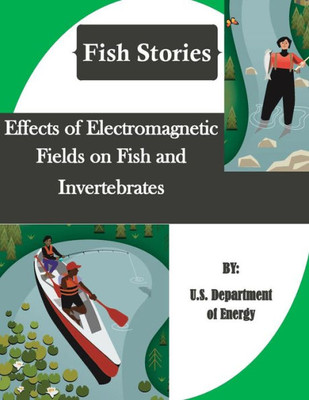
Effects Of Electromagnetic Fields On Fish And Invertebrates (Fish Stories)
CreateSpace Independent Publishing Platform
ISBN13:
9781523454471
$15.75
This fiscal year (FY) 2011 progress report (Task 2.1.3 Effects on Aquatic Organisms, Subtask 2.3.1.1 Electromagnetic Fields) describes studies conducted by PNNL as part of the DOE Wind and Water Power Program to examine the potential effects of electromagnetic fields (EMF) from marine and hydrokinetic (MHK) devices on aquatic organisms, including freshwater and marine fish and marine invertebrates. In this report, we provide a description of the methods and preliminary results of experiments conducted in FY 2010-FY 2011 to evaluate potential responses of selected aquatic organisms. Preliminary EMF laboratory experiments during FY 2010 and 2011 entailed exposures with representative fish and invertebrate species including juvenile coho salmon (Oncorhynchus kisutch), Atlantic halibut (Hippoglossus hippoglossus), California halibut (Paralicthys californicus), rainbow trout (Oncorhynchus mykiss), and Dungeness crab (Metacarcinus magister). These species were selected for their ecological, commercial, and/or recreational importance, as well as their potential to encounter an MHK device or transmission cable during part or all of their life cycle. EMF intensities during the various tests ranged between approximately 0.1 and 3 millitesla, representing a range of expected upper bounding conditions that might be encountered at a field location, according to values currently reported in the literature. Based on previous studies, acute effects such as mortality were not expected to occur from EMF exposures. Therefore, our measurement endpoints focused on developmental changes (i.e., growth and survival from egg or larval stage to juvenile), exposure markers indicative of physiological responses, or behavioral responses (e.g., detection of EMF, interference with feeding behavior, avoidance or attraction to EMF) for the various species. Data analysis is still in progress, however preliminary results to date have shown few statistically significant laboratory responses to elevated EMF intensities for the aquatic species and endpoints tested. Further testing and replication is needed to verify and expand on these results. Additional species are currently planned for laboratory testing in the next fiscal year (e.g. American lobster, an elasmobranch) to provide a broader assessment of species important to stakeholders.
- | Author: U. S. Department U.S. Department of Energy, Penny Hill Press Inc
- | Publisher: CreateSpace Independent Publishing Platform
- | Publication Date: Jan 18, 2016
- | Number of Pages: 52 pages
- | Language: English
- | Binding: Paperback
- | ISBN-10: 1523454474
- | ISBN-13: 9781523454471
- Author:
- U. S. Department U.S. Department of Energy, Penny Hill Press Inc
- Publisher:
- CreateSpace Independent Publishing Platform
- Publication Date:
- Jan 18, 2016
- Number of pages:
- 52 pages
- Language:
- English
- Binding:
- Paperback
- ISBN-10:
- 1523454474
- ISBN-13:
- 9781523454471





